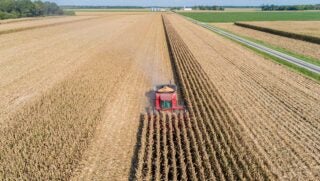Farmers who planted cover crops on prevented planting acres will be permitted to hay, graze, or chop those fields earlier than November this year, the U.S. Department of Agriculture announced today. USDA’s Risk Management Agency adjusted the 2019 final haying and grazing date from Nov. 1 to Sept. 1 to help farmers who were prevented from planting because of flooding and excess rainfall this spring.
“We recognize farmers were greatly impacted by some of the unprecedented flooding and excessive rain this spring, and we made this one-year adjustment to help farmers with the tough decisions they are facing this year,” said Under Secretary for Farm Production and Conservation Bill Northey. “This change will make good stewardship of the land easier to accomplish while also providing an opportunity to ensure quality forage is available for livestock this fall.”
RMA has also determined that silage, haylage, and baleage should be treated in the same manner as haying and grazing for this year. Producers can hay, graze or cut cover crops for silage, haylage or baleage on prevented plant acres on or after Sept. 1 and still maintain eligibility for their full 2019 prevented planting indemnity.
“These adjustments have been made for 2019 only,” said RMA Administrator Martin Barbre. “RMA will evaluate the prudence of a permanent adjustment moving forward.”
American Farm Bureau Federation President Zippy Duvall said, “With a historically challenging and difficult planting season, farmers and ranchers appreciate the needed flexibility being granted by RMA with today’s announcement adjusting the 2019 final haying and grazing date from Nov. 1 to Sept. 1. Our farmers who were prevented from planting because of flooding and excess rainfall this spring will now have the opportunity to hay, graze or cut cover crops for silage, haylage, and baleage. This is an incredibly important change to ensure livestock producers have the necessary feed to properly care for their animals throughout the rest of this year.”


